What are LPVO scopes used for?
Hunting, competition, target shooting, home defense, and law enforcement.
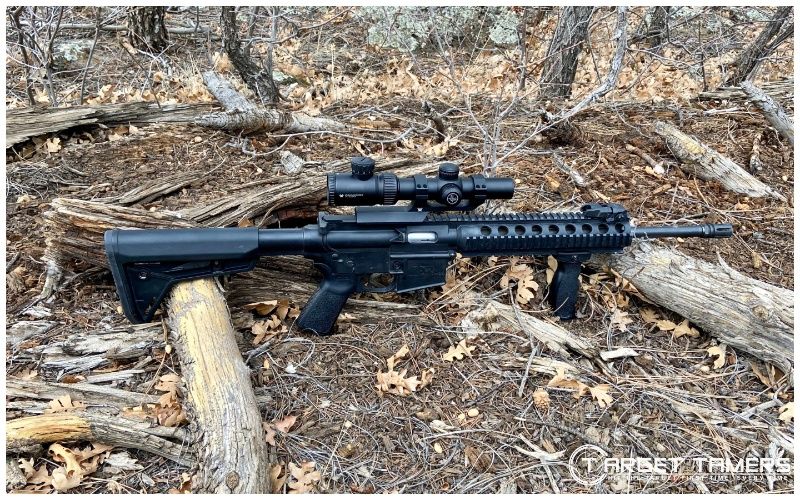
With how popular LPVO scopes are these days, I’ve compiled a round-up of the best 1-4x scopes under $1000. You must consider these must-haves if close-range and fast-moving engagements are in your future.
From budget 1-4x scopes to duty-grade ones, I have them in my hand-picked list.
Why Trust Us?
After hundreds of hours of hand-testing scopes in the field and at the range, and thousands more hours researching and writing about them, we feel we earn the title of experts when it comes to optics!
We purchase as many of the optics for our tests as possible, and run them through their paces to make sure they will perform at the range and in the field.
Our combined decades of experience from plinking, hunting, competition shooting, and mounting and sighting in scopes has been integral in putting together this round-up of the best 1-4x scopes.
Get the inside scoop on how we test optics here.
Best 1-4x LPVO Scopes
1. Steiner P4Xi 1-4x30 - Best for Duty Use
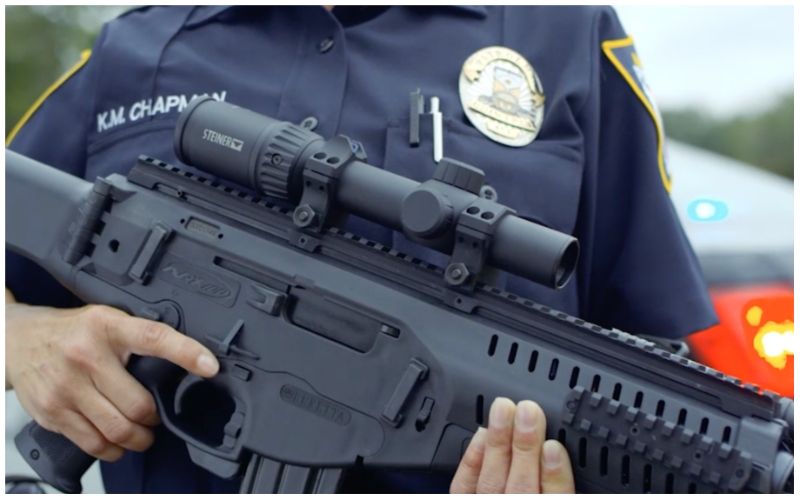
The LPVO has quickly become a “thing” among law enforcement. A great scope to consider is the Steiner P4Xi that has true 1x performance, a wide field of view, fantastic glass, daylight bright illumination, and the ability to stretch the distance in critical situations.
Pros:
- Excellent optics
- P3TR reticle
- Illuminated center dot
- Intermittent off
- NV compatible
Cons:
- Mushy turrets
- No throw lever included
I suspect that you’ll either love the P3TR reticle or hate it, though there is the green illuminated G1 reticle too. The P3TR is simple and effective. It’s designed as a BDC reticle with tapered crosshairs to provide holdovers, and this is actually ideal if you want to stretch the distance and don’t dial in.
Given that there’s been some reports about mushy adjustments, I would say it’s definitely a sight-it-in and leave-it-alone kind of scope. Since the P3TR is calibrated for a 200-yard zero for the 5.56mm and 7.62mm rounds, you will need your dope if you want a different zero distance.
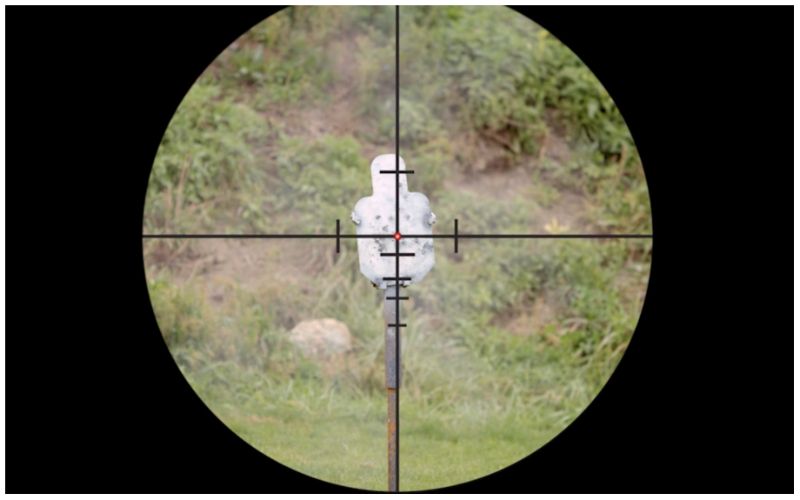
You’re also getting excellent optical quality as well. I’d say it’s even better than the Trijicon Accupoint, and it also has a wider FOV where the edge-to-edge sharpness really comes in to provide a great, high-quality sight picture at 4x.
The illumination is only displayed through the center dot with the black glass-etched reticle. It’s daylight bright, has 11 total settings, and there are intermittent off positions between each level. Yes, it’s also night vision compatible!
Though I think the reticle and the illumination is great, the dot is smaller than 1 MOA. This can make it a little slow to pick up, but you can remedy that with increasing the brightness. At distance, if you have the time to crank up the power, then you likely have time to find that dot.
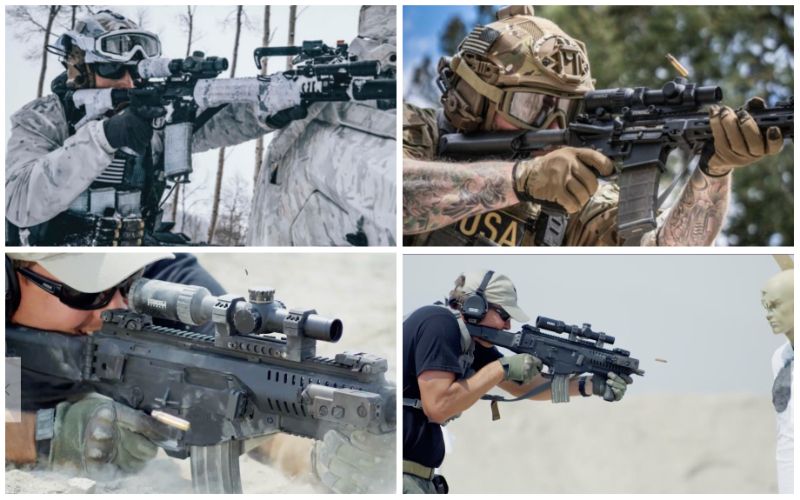
Unfortunately, there isn’t a throw lever included in the box although I’m sure you can buy one separately. However, the knurling is grippy enough to manipulate magnification as needed. As a patrol optic, it stays on 1x anyway. But of course, having low variable magnification makes it nice for identification and the potential for improved precision.
Now the real question. Is it worth the cost? At under $1000, it’s not a top-end scope, but it’s what I would designate as a high-end model of the mid-range class. For the optics and performance, it’s worth the MSRP. However, I’m a bean counter too, so it would be an even sweeter purchase if you can get it on sale!
2. Trijicon Accupoint 1-4x24 – Best Battery-Free LPVO
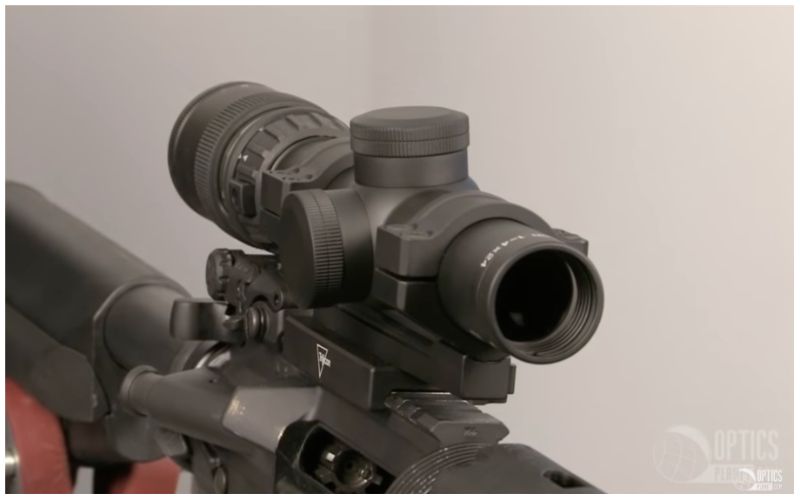
The Accupoint TR24 is an excellent example of a do-it-all optic for those after a CQB scope. What makes the Accupoint unique to Trijicon’s other LPVO offerings and alternatives in the market is the battery-free illumination. It’s clearly a well-established favorite.
Pros:
- True 1x
- Triangle post reticle
- Battery-free illumination
- Repositionable power lever
- Extremely rugged
Cons:
- Battery-free illumination
It’s almost comical that the one feature that sets apart the Accupoint 1-4x as a popular scope is also the one feature that can simultaneously be its disadvantage. The TR24 provides illumination via fiber optics during the day and tritium in the dark. You don’t have to depend on batteries, and tritium lasts about 12 years, so you’re good for a while.
The fiber optics work excellently providing bright illumination, and you can regulate brightness with the closure mechanism on the scope. Without any ambient light, the fiber optics do not work, and the tritium takes over. If the tritium lamp fails, you won’t have any illumination.
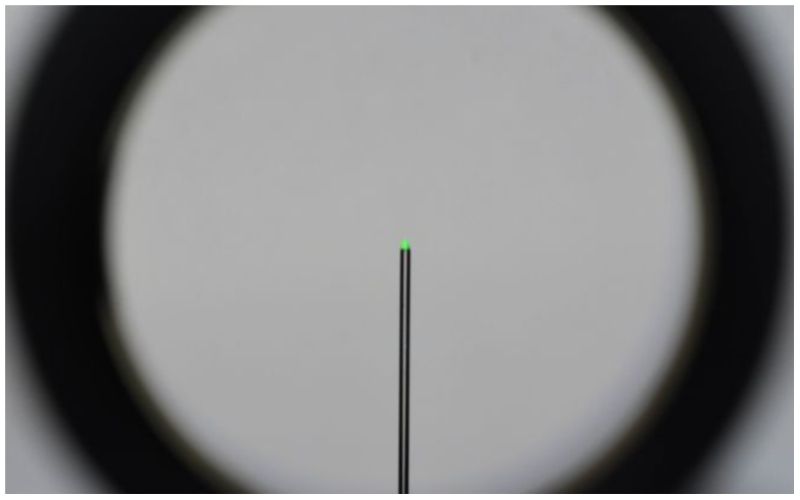
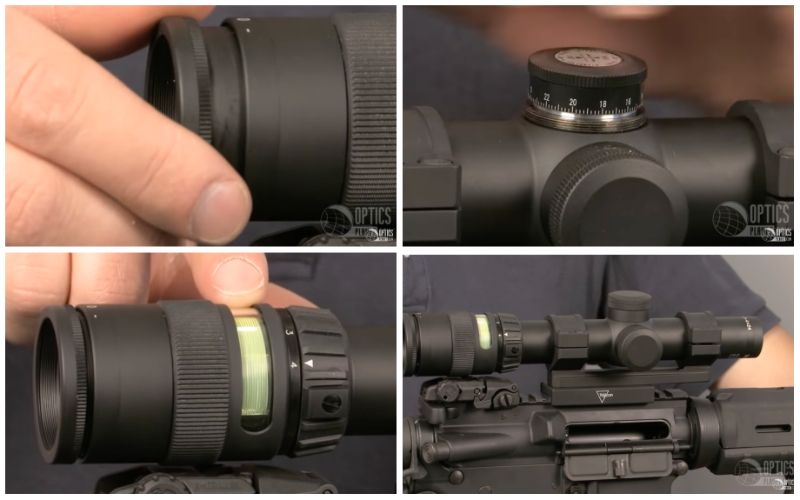
This is where I think the triangle post is a great advantage. It’s simple and I wouldn’t recommend it for long-range or holdovers, but with the right zero, you could take it out quite a bit if needed. The posts are thick, black, and highly visible. The tip portion that would normally be illuminated is also black, so I would say that it’s still usable even without the fiber optics or tritium.
The Accupoint comes with a repositionable throw lever. Just like a Trijicon, it’s totally rugged and tough surviving submersion to a 10-foot depth. It offers 0.25 MOA adjustments and weighs 14.4 oz with a 30mm tube. Although the TR24 model has amber illumination, the TR24-R and the TR24-G offer red and green illumination. Options – I like it.
3. Leupold Mark 3HD 1.5-4x20 – Best 1.5x LPVO
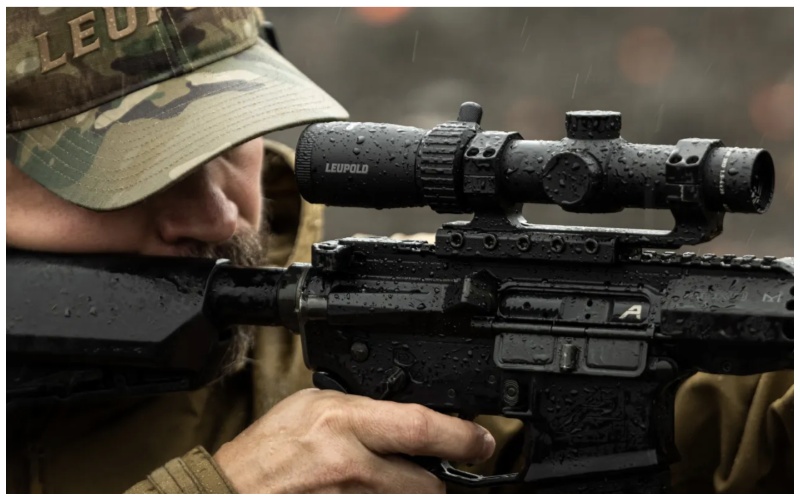
The Mark 3HD 1.5-4x LPVO is designed for rapid target engagement and can go the distance with its BDC-like reticle, the illuminated Firedot BDC. Set in the SFP with drop holdovers, there’s no need to dial, but you can go the distance in seconds.
Pros:
- MST
- HD optics
- Elite Optical System
- Removeable throw lever
- Lightweight
Cons:
- 1.5x magnification
As you can tell, this isn’t a true 1-4x LPVO. Many 1x LPV scopes struggle with providing true 1x performance too, and at this price point at this point in time, Leupold doesn’t offer 1x performance under $1000. Your next best option for affordability is their LPV scopes starting with 1.5x magnification.
Even so, the Mark 3HD is an excellent and rugged scope that I think is better for hunting than it would be for building clearing on a duty rifle. Though intended for close-range performance, obvious by its 1.5-4x configuration and fixed parallax at 150 yards, it still comes with the Firedot BDC reticle. The center dot is illuminated with 8 settings, it’s daylight bright, and it has intermittent off positions.
One thing I really like about this scope is that it’s a MIL based scope with adjustments in 0.1 MIL clicks. The Mark 3HD is super lightweight at 13.1 oz, the CR2032 battery powers illumination between 300-1600 hours depending on brightness intensity. However, with MST (motion sensor technology), I’m sure it’ll last longer than that.
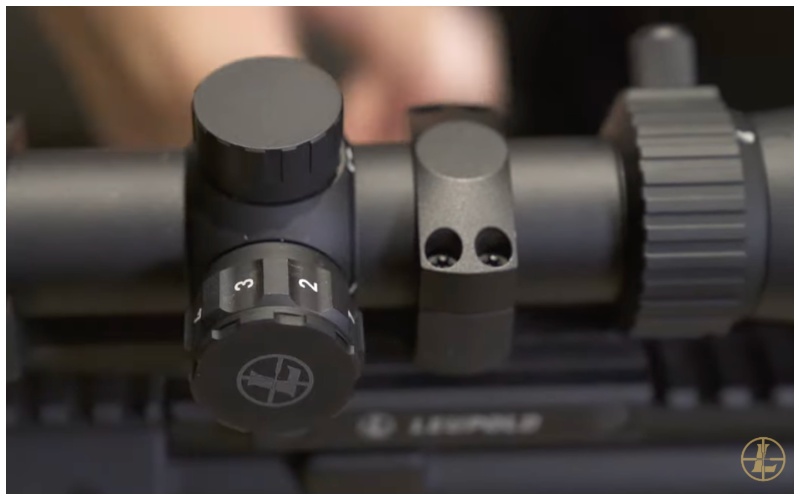
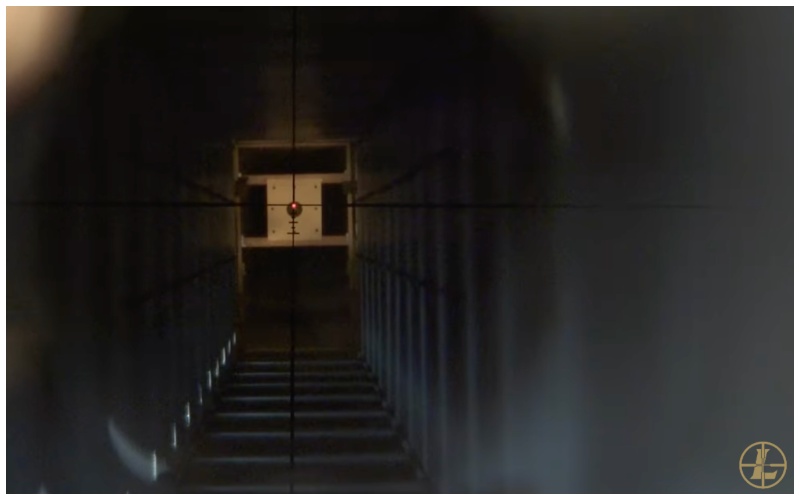
The Leupold scope offers excellent optical quality with the Elite Optical System and HD elements that are assumed to be the equivalent of the ED glass term. With a small objective lens, the resolution provided to make up for the light loss should serve well for hogs and other two or four-legged intruders.
I don’t see why you’d need to remove it, but the included throw lever is removable if you want to trade it out for an upgrade. As it is, it suits the low-profile theme the Mark 3HD seems to have.
What’s the difference between the Mark 3HD 1.5-4x VS VX-3HD 1.5-5x scopes? Well obviously, the latter goes up to 5x magnification, but the reticles are different. While the Mark 3HD has a BDC reticle, it doesn’t need the zero stop or anything like that since the turrets are capped and it’s assumed you won’t be dialing in – set it, know your drop, and forget it. The VX-3HD has duplex style reticles where you will need to dial for distance, so it has a zero stop and is CDS compatible.
4. Bushnell AR Optics 1-4x24 Illuminated FFP – Best for AR-15
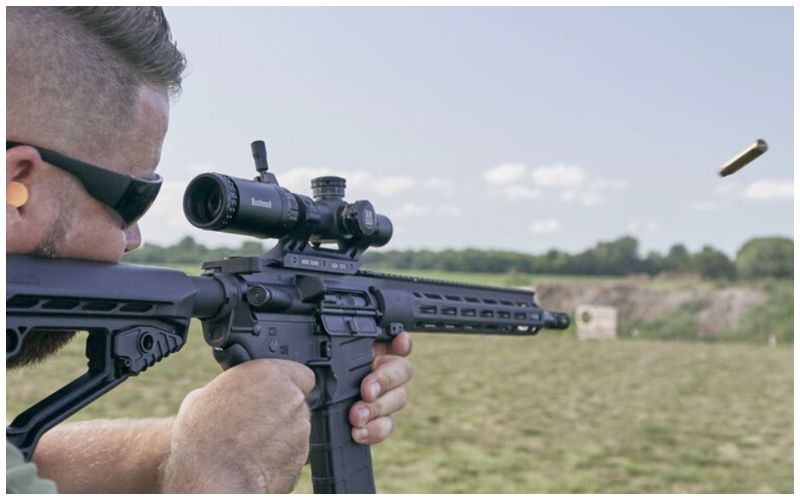
The Bushnell 1-4x24 FFP Illuminated scope is clearly made for the AR-15. The AR Optics riflescope offers illumination in the BDC reticle in the first focal plane. With how simple, visible, and uncluttered it is, it’s ideal for the jack-of-all-trades carbine.
Pros:
- FFP BDC reticle
- Illumination
- Intermittent off
- MIL scope
- Multi-height PCL
Cons:
- Maybe slightly unfocused at 4x
As is true with many LPVO’s, it can be hard to find the sweet spot for focusing the sight picture at 1x and at max magnification. The fast focus eyepiece will help with that. While there’s very little complaint about it, it’s something I suspect will be noticed.
For the money though, at under $150, this scope is well worth the price. You have exposed turrets that are MIL based, so if you want MOA (read about MIL vs MOA), this isn’t the right LPVO for you. Adjustments are in 0.1 MIL.
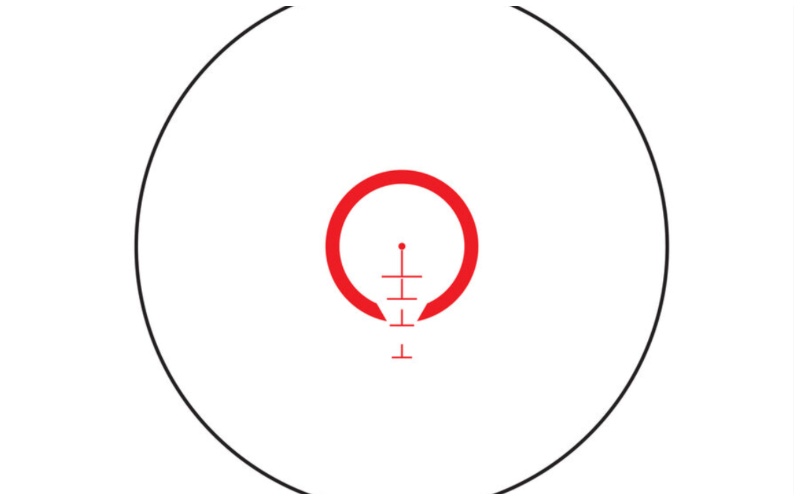
The illumination knob offers 6 brightness settings. I wouldn’t say that it’s daylight bright, but bright enough to satisfy most applications. It does have intermittent off positions between each setting which makes it extremely convenient to quickly turn it off to conserve battery life.
The AR Optics scope also comes with a multi-height PCL lever. There’s a short one or a long lever that you can install according to your preferences. It’s been said to be a bit stiff to use, so hopefully that loosens up over time and use.
The illuminated FFP BDC reticle has holds out to 500 yards and is calibrated for the 5.56mm NATO round. The entire reticle is illuminated. It might get a bit small at 1x power which seems to be true of many FFP LPV scopes, but your eyes are quick to acquire the reticle and you can make fast work of acquiring the target.
Making it a point to be clear, this is a 30mm tube scope. So please purchase a 30mm mount. I’ve seen a lot of complaints that people thought this is a 1” scope – it’s not.
5. Leupold VX-Freedom 1.5-4x20 – Best for Hunting
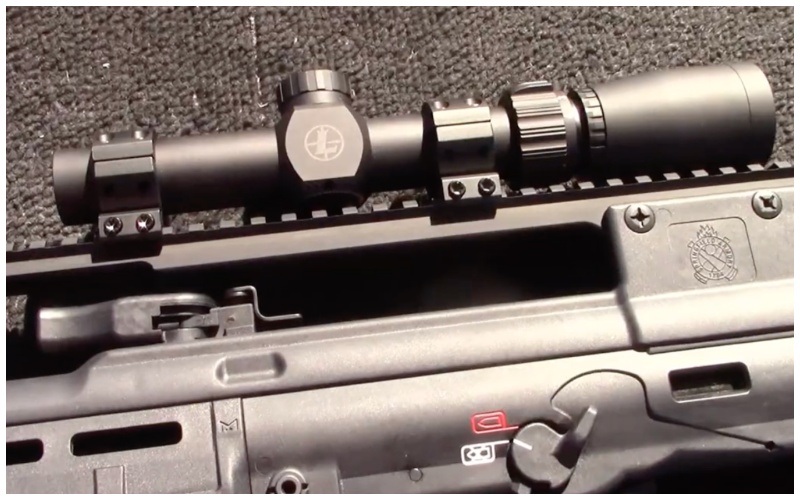
Thanks to Leupold, there is an affordable LPVO specifically made for hog hunting. The VX-Freedom 1.5-4x20 with the Pig-Plex reticle combines the must-have reticle features to draw the eye, home in on your target, and stretch the distance with BDC holdovers.
Pros:
- Price
- Pig Plex reticle
- SFP
- Advanced Optical System
- Fog/waterproof
Cons:
- Non-illuminated scope
The VX-Freedom LPVO with the Pig-Plex reticle is non-illuminated, so you won’t have a nice, red dot on your target. This is a drawback, but the reticle is very visible since it’s glass-etched and located in the second focal plane, so it never changes size throughout the 1.5-4x magnification range.
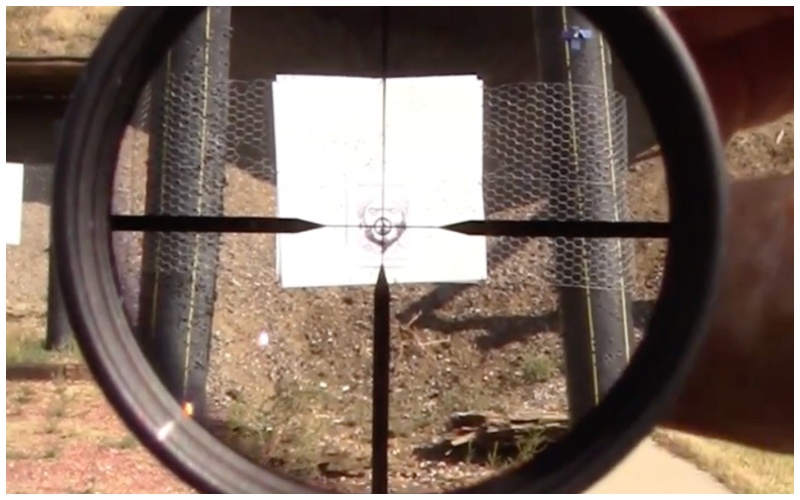
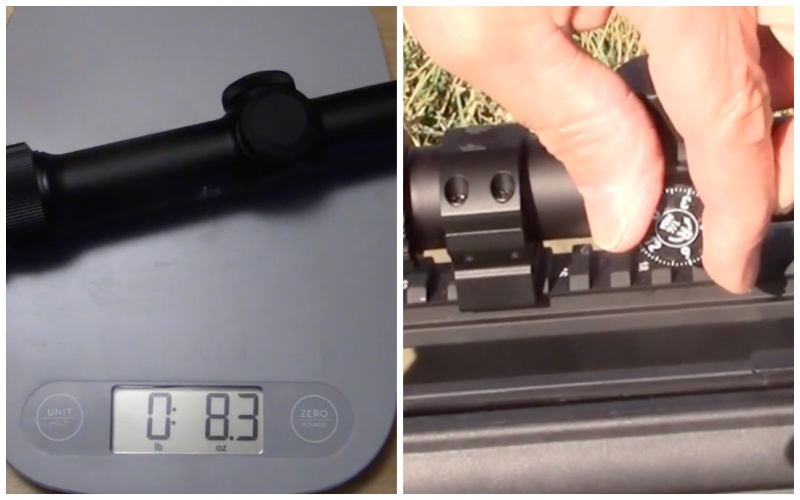
The posts appear to be 0.8 MOA in size, so they’re not too thick to cover up too much of the target at distance. Though it’s designed for a 200 or 300-yard zero, I’d say to stick with a 100-yard or 200-yard zero since parallax is set for 150 yards. Since the turrets are likely to be less tactile than what you’re used to, I’d recommend to sight in and dope your holdovers to avoid having to dial in for distance.
The VX-Freedom 1.5-4x scope has Leupold’s Advanced Optical System which I think is their standard optical system, so it’s entry-level for the manufacturer but is sharp and clear compared to other scopes at this price point.
As is standard for Leupold riflescopes, the cheap VX-Freedom LPVO is also made in the USA and warrantied for life.
6. Vortex Crossfire II 1-4x20 – Best for Target Shooting
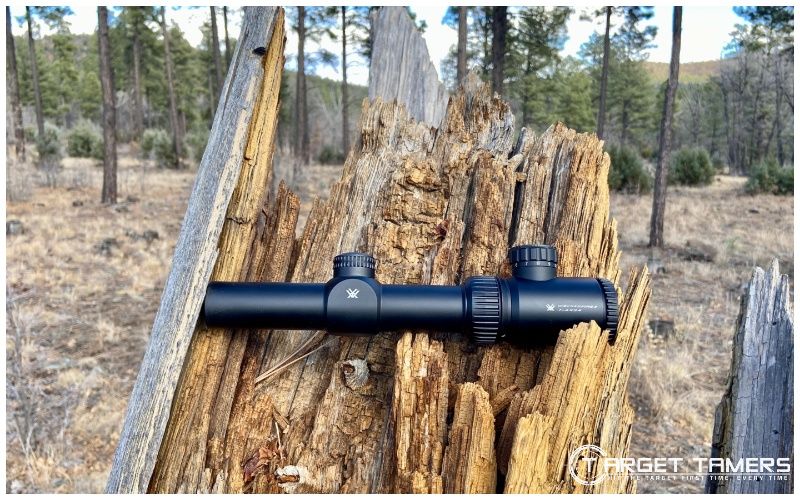
The Crossfire II 1-4x is an entry-level scope best suited to those on a budget and who want to stick with an established manufacturer with a quality warranty for the just in case. After a lot of hands-on with the Crossfire LPV, it’s a good scope for training, plinking, and target shooting.
Pros:
- V-Brite reticle
- Glass-etched reticle
- Capped turrets
- 0.5 MOA adjustments
- Fog/waterproof
Cons:
- Not true 1x
I’d daresay that most, if not all, LPV scopes under $500 will not have true 1x. That’s a hard feature to provide even for the most expensive LPVOs in the market. So, this was an expected drawback, and it came as no surprise. I’d say the 1x setting is more like 1.25x on the scope I tested. I couldn’t get comfortable enough to use the Crossfire with two eyes open.
Besides that, the illumination is not daylight bright, and my adjustments were soft. I did have a bad range day with the Crossfire II, but it appears that it was user error. I remounted everything, tested again, and put it on a different rifle as well, and the LPVO performed. It tracked good enough in my opinion and I got it zeroed. For 100 yards and more, the Crossfire did excellently on my 5.56 rifle.
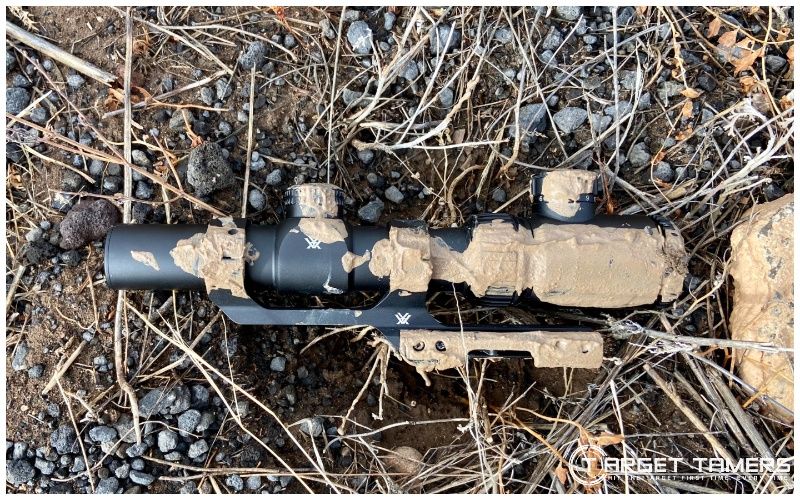
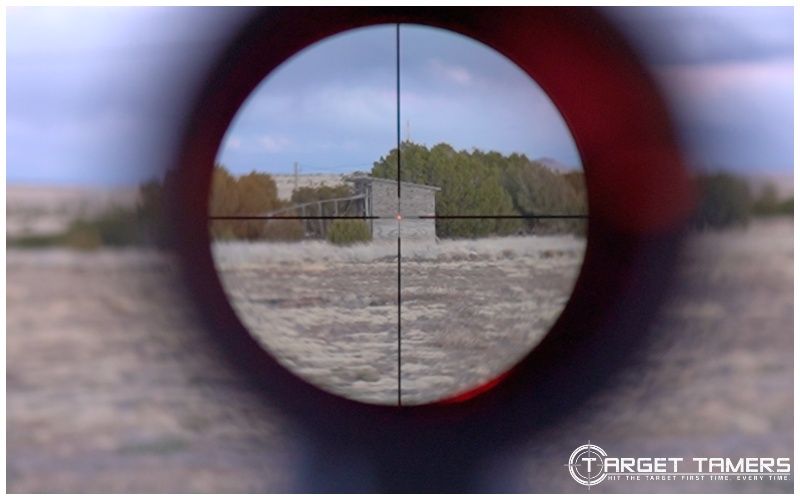
The V-Brite reticle has a 1.5 MOA floating dot that’s easy to see without illumination. This will be the norm since the illumination is not visible during the day in the outdoors – at least not for me. But I am super impressed with its build quality. The scope was drenched with gallons of water under a yard hydrant. I forgot to record it the first two times and finally got shots on the third try. That says a lot for its waterproofness.
For the money, performance, and quality, I’d recommend the Crossfire II 1-4x for target shooting, plinking and the .22LR, and for training rifles.
7. Tacticon Apex Falcon V2 1-4x20 – Best Cheap 1-4x
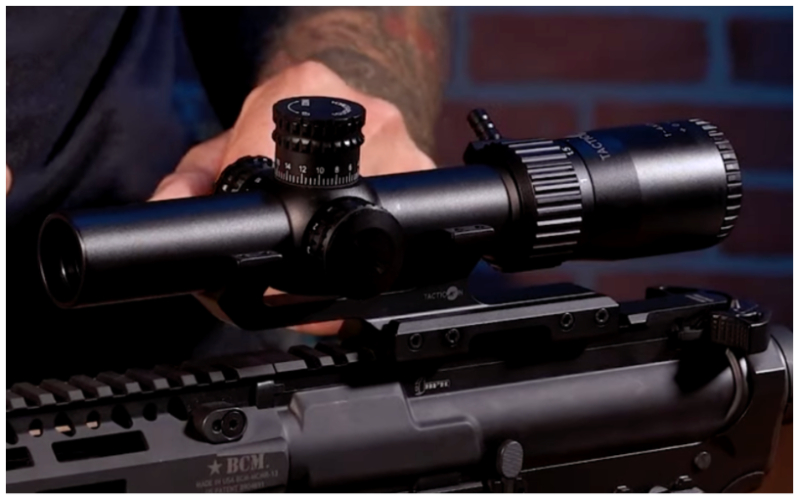
Unsurprisingly, the Tacticon Apex Falcon V2 1-4x is a budget scope but one that has made a good impression on the masses. Sure, there are cheaper LPVOs under $100, but quality control can be exceedingly iffy. Spend a little more and you’re likely to get a little better like the Tacticon 1-4x LPVO.
Pros:
- Price
- Exposed turrets
- Glass-etched reticle
- Long eye relief
- Included mount
Cons:
- Quality control
Quality control can be a real issue among budget optics and the Tacticon 1-4x LPVO is not an exception, however, complaints seem to be less than with alternatives. Other than just limited refund policies that we often see with cheap optics manufacturers (Tacticon has one too for 60 days), the 1-4x LPV comes with a 1-year warranty as well.
I think one of the best features to highlight is its long 5” of eye relief. This makes it suitable for use on many centerfire rifles including some heavier kicking ones.
You also have red illumination though the reticle is highly visible without it. It has 11 brightness settings and is powered by a CR2032 battery of which there two batteries are included in the box.
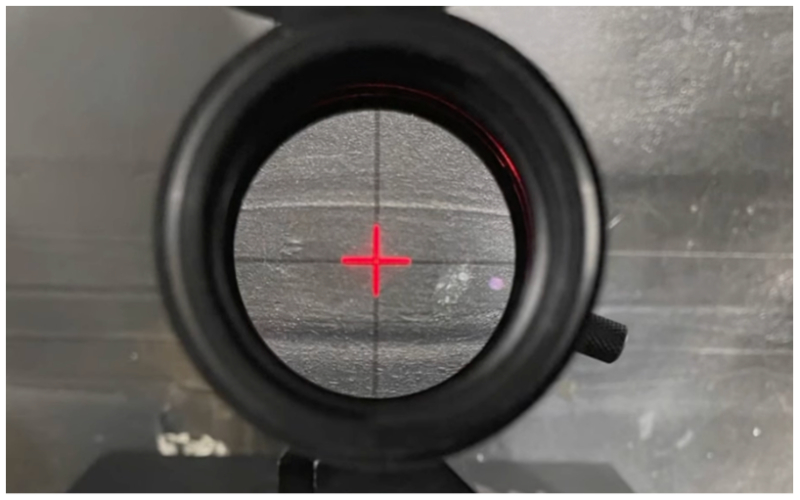
The BDC reticle is MIL-based advertised by Tacticon as having 10 MILS of holdovers. What I’ve noticed right away is that it does have a mismatched system, so a MIL reticle with MOA turrets. If you’re not comfortable with that, move on to a different scope.
The included mount is a 30mm cantilever and this adds value to the buy considering these can cost anywhere from $40 to well over $100 for one. Though it doesn’t seem to be a common problem, if it doesn’t hold zero, I’d recommend upgrading the mount.
If you’re worried about the exposed turrets, don’t be. They’re pull/push locking turrets, so they won’t unintentionally change their position. If you’re experiencing difficulty adjusting them, they’re probably locked in place. Go ahead and pull them up – you’re welcome.
With good build quality, illumination, locking turrets, and a good track record with the masses, the Tacticon Apex Falcon V2 scope is one of the better buys in the budget LPVO market.
8. Monstrum 1-4x20 – Best for 22LR
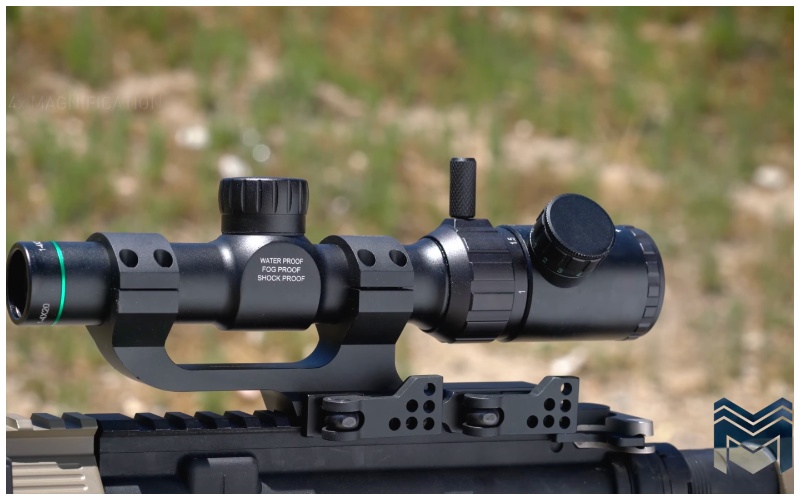
As one of the cheapest LPVO scopes in the market, you can bet the Monstrum 1-4x is extraordinarily popular. However, it does have mixed reviews, so there are some things to consider before you buy.
Pros:
- Price
- Dual illumination
- BDC reticle
- Glass-etched reticle
- Ultra-lightweight
Cons:
- Included rings
The Monstrum LPVO is incredibly lightweight at only 11 oz, and it’s definitely thanks in part to its 8.5” length and 1” tube. Speaking of the tube, 1” rings are in the box to get the scope mounted and sighted in right away. Though freebies are always nice and the rings are said to have a high height, it could possibly still be too low for your setup.
Additionally, I have concerns about durability and therefore zero retention. I’d recommend giving them a try if it’s intended for a .22LR rifle like an M&P 15/22. A little threadlocker won’t hurt either.
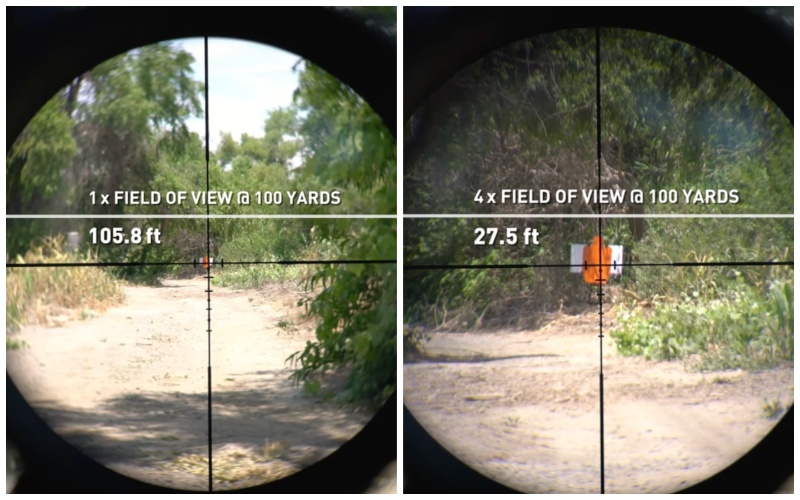
The Monstrum 1-4x scope has a BDC reticle with holdovers out to 500 yards. The windage hashmarks are for auto-ranging a target at 100 yards, so approx. an 18” shoulder breadth of the average human. It’s technically 18 MOA wide at max power. The distance to the thick posts along the windage crosshair measures shoulder width at 25 yards, but at that point, your attacker or target is clear and obvious, right?
Though the reticle is designed for mid-range distances, I’d recommend it for a .22 and obviously the holdovers will change.
The reticle is glass-etched and visible as a black reticle, but it does offer red and green illumination. There have been some complaints about uneven brightness intensity throughout the reticle, but for close-range use for plinking on paper and steel targets, it shouldn’t be an issue.
For the money, it’s a cheap scope under $100, so it’s the economical choice for those on a tight budget.
A Guide to Choosing the Best 1-4x LPVO Scope
Cost
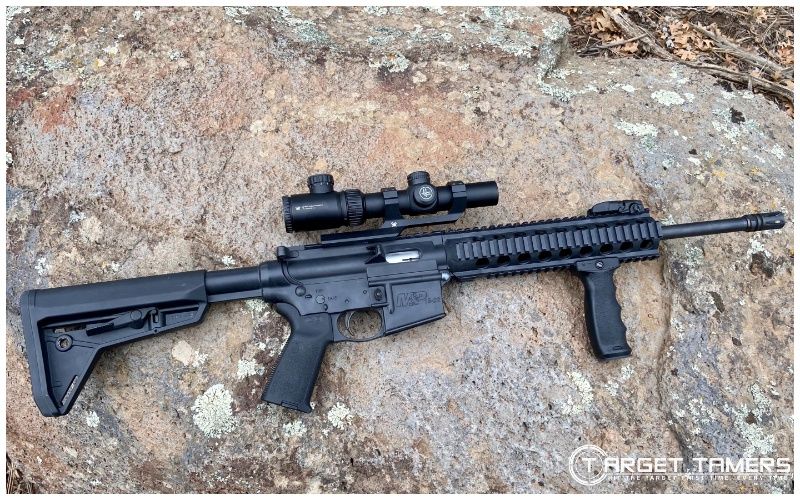
Cost will vary greatly between the best 1-4x LPVO scopes with budget options under $1000 to high-end scopes that also go into the $2000 range. However, the most popular 1-4x scopes are under $1000 as more people acquire them for home defense, target shooting, and hunting.
Many factors will also affect price. These include things like glass and build quality to the integrity of a turret system and even reticle type with illumination.
| Product | Award | Price Range |
|---|---|---|
| Steiner P4Xi | Best for Duty Use | Under $1000 |
| Trijicon Accupoint | Best Battery-Free LPVO | Under $1000 |
| Leupold Mark 3HD | Best 1.5x LPVO | Under $800 |
| Bushnell AR Optics FFP Illum. | Best for AR-15 | Under $350 |
| Leupold VX-Freedom | Best for Hunting | Under $300 |
| Vortex Crossfire II | Best for Target Shooting | Under $200 |
| Tacticon Apex Falcon V2 | Best Cheap 1-4x | Under $200 |
| Monstrum | Best for .22LR | Under $100 |
LPVO VS Red Dot
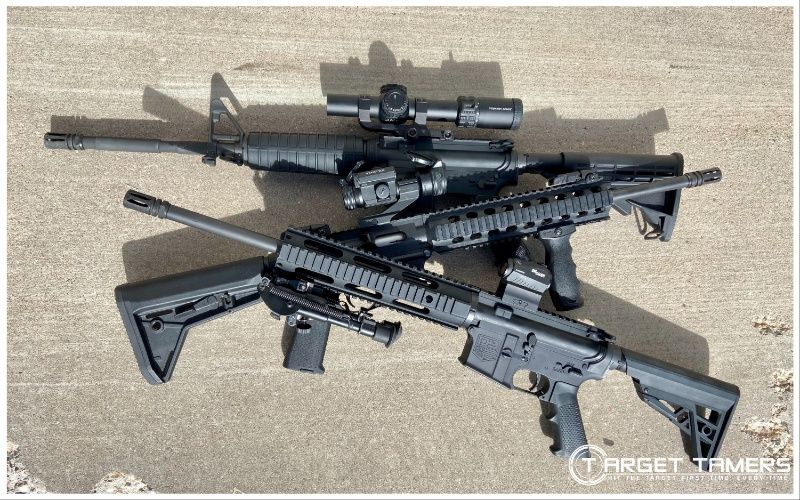
With such limited variable magnification of 1-4x, you might be wondering if you should just consider a red dot sight. It’s a valid comparison, but at least you have variable magnification whereas a red dot and magnifier can still only offer fixed magnification.
However, true 1x performance is hard to achieve especially in a scope that costs under $1000. But many are forgiving of the slight distortion at 1x to have the benefits of possible improved precision, variable power, and a BDC reticle for the just in case to go beyond 100 or 200 yards.
For more information about LPVO VS red dots, check out our comparison guide on it.
Configuration
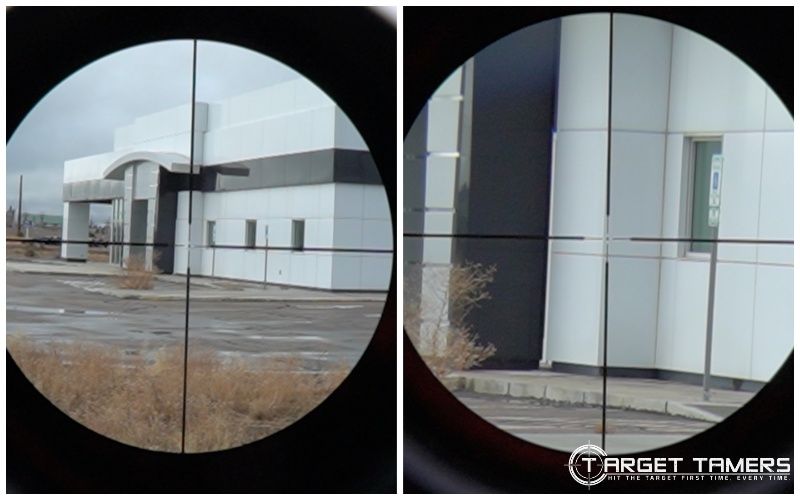
The low magnification of a 1-4x scope is ideal for 25-200 yards though it’s usually intended for inside 100 yards. Parallax is set to 100 or 150 yards giving you an idea of its limitations. With low power, it’s great for close-range and fast-moving targets with rapid target and reticle acquisition.
The 1-4x configuration gets a lot of slack and many people end up returning it because they discover it doesn’t have enough magnification. This isn’t a flaw of the scope but a lack of realization of what they need prior to purchasing.
Whether it’s combat and tactical engagements, civilian protection, or hunting, the 1-4x still has a place in the market and the field.
| Product | Magnification | Objective Lens | Tube Size | Length | Weight |
|---|---|---|---|---|---|
| Steiner P4Xi | 1-4x | 24mm | 30mm | 10.3” | 17.3 oz |
| Trijicon Accupoint | 1-4x | 24mm | 30mm | 10.3’ | 14.4 oz |
| Leupold Mark 3HD | 1.5-4x | 20mm | 30mm | 9.5” | 13.1 oz |
| Bushnell AR Optics FFP Illum. | 1-4x | 24mm | 30mm | 9.4” | 18 oz |
| Leupold VX-Freedom | 1.5-4x | 20mm | 1” | 9.35” | 9.6 oz |
| Vortex Crossfire II | 1-4x | 24mm | 30mm | 9.61” | 14.8 oz |
| Tacticon Apex Falcon V2 | 1-4x | 20mm | 30mm | 9.8” | 17.3 oz |
| Monstrum | 1-4x | 20mm | 1” | 8.5” | 11 oz |
Specifications
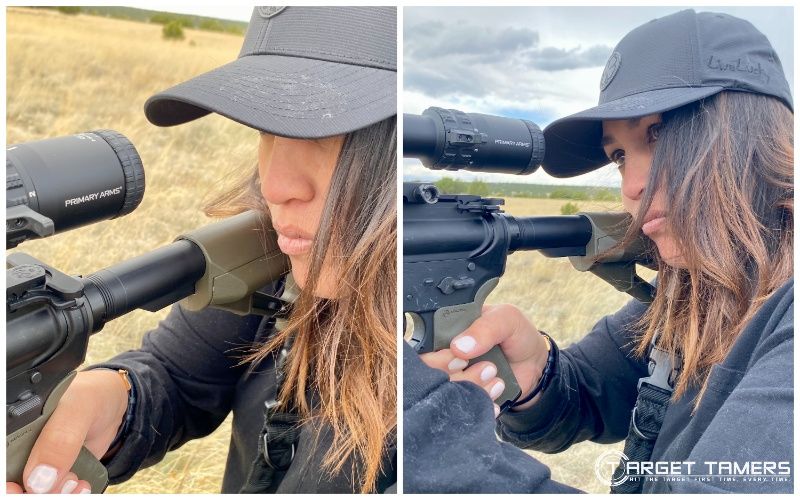
Specifications such as the field of view, eye relief, and the adjustment values must be considered prior to purchasing. Avoid the regret of purchasing a MIL dot scope when you desired an MOA scope.
The field of view is pretty competitive among 1-4x scopes. Obviously, the wider the better, but also consider a scope that has a slim profile so that you can still keep both eyes open at 1x to maintain maximum situational awareness and an unlimited FOV.
The eye relief of an LPVO is almost always going to be better than a magnifier when paired with a red dot sight. Most are around 2.5-4” but many have 5” of unofficial eye relief for maximum comfort and versatility for your setup.
The standard for adjustment values among 1-4x scopes will be 0.5 MOA, 0.25 MOA, and 0.1 MIL. Some scopes may have less than tactile turrets and this can be cause for concern. The real assurance is if it still tracks accurately.
Since these LPVOs are designed for close-range, some provide for distance with a BDC reticle and are thus set-it and forget-it scopes. You don’t need to dial in to stretch the distance. Knowing your dope and confirming at the range will go a long way and you’ll avoid being teed off with mushy turrets.
Glass type and build integrity are rarely listed or explained in transparent detail. However, you can get an idea of what to expect based on what the manufacturer states ranging from HD elements (calcium fluoride) to FMC (Fully Multi-Coated) coatings and IP ratings. Though many scopes will market fog and waterproofness, it’s to be expected that it’s just water-resistant the cheaper the scope gets.
| Product | FOV (@ 100 yards) | Eye Relief | Adjustments | Glass Type | Fog/Waterproof |
|---|---|---|---|---|---|
| Steiner P4Xi | 110-27.5 ft | 4-3.5” | 0.5 MOA | High-contrast | Yes |
| Trijicon Accupoint | 94.2-24.1 ft | 3.2” | 0.25 MOA | FMC broadband anti-reflective glass | Yes |
| Leupold Mark 3HD | 74.2-29.3 ft | 1.2-3.7” | 0.1 MIL | HD optics | Yes |
| Bushnell AR Optics FFP Illum. | 112-27 ft | 3.5” | 0.1 MIL | FMC | Yes |
| Leupold VX-Freedom | 74.2-29.3 ft | 4.2-3.7” | 0.25 MOA | Advanced Optical System | Yes |
| Vortex Crossfire II | 96.1-24.1 ft | 4” | 0.5 MOA | FMC | Yes |
| Tacticon Apex Falcon V2 | 96.1-24 ft | 5-4.5” | 0.5 MOA | FMC | Water-resistant |
| Monstrum | 105.8-27.5 ft | 3.8-3.5” | 0.5 MOA | Undisclosed | Water-resistant |
Reticles & Focal Planes
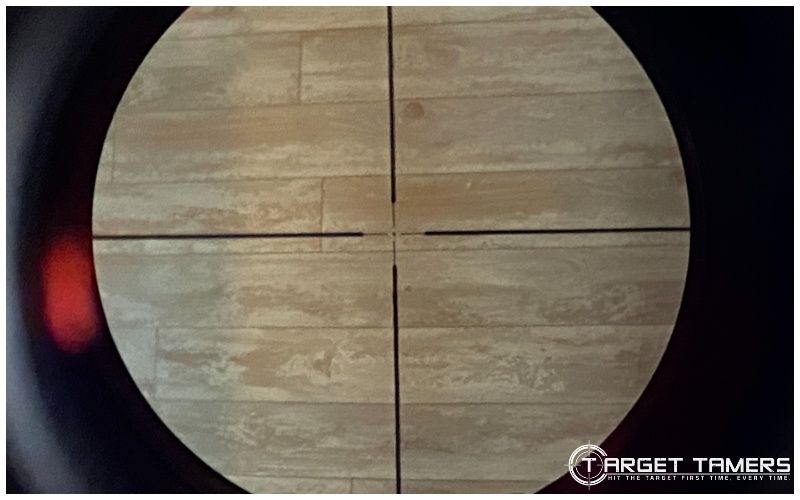
On average, 1-4x scopes will have a simple reticle in the second focal plane. There are options with FFP reticles, but at 1x they can be too small to effectively use and act more as a red dot sight at that point. However, SFP reticles are ideal for the 1-4x scope as they remain the same size.
Now the type of reticle might matter to you especially if you plan to go out past 200 yards with a 1-4x LPVO. Holdovers will be necessary and though many are calibrated for the .223 REM and 5.56mm NATO rounds, you will need to confirm your holdovers at the range.
I think duplex style reticles are absolutely appropriate for this configuration, but there is some versatility and flexibility offered with BDC reticles in the 1-4x scope.
Not all scopes will have illumination and it does tend to cost more for this feature. However, it can do a lot for reticle acquisition especially in low light conditions where LPVs tend to lose a lot of light quickly.
| Product | Reticle | Focal Plane | Illumination | Illumination Settings | Battery Type |
|---|---|---|---|---|---|
| Steiner P4Xi | P3TR | SFP | Yes | 11 | CR2032 |
| Trijicon Accupoint | BAC Triangle Post | SFP | Yes | No | N/A |
| Leupold Mark 3HD | Firedot BDC | SFP | Yes | 8 | CR2032 |
| Bushnell AR Optics FFP Illum. | Illuminated BDC FFP | FFP | Yes | 6 | CR2032 |
| Leupold VX-Freedom | Pig-Plex | SFP | No | N/A | N/A |
| Vortex Crossfire II | V-Brite | SFP | Yes | 11 | CR2032 |
| Tacticon Apex Falcon V2 | Mil-dot | SFP | Yes | 11 | CR2032 |
| Monstrum | Rangefinder | SFP | Yes | 5 Green/5 Red | CR1632A |
Warranty
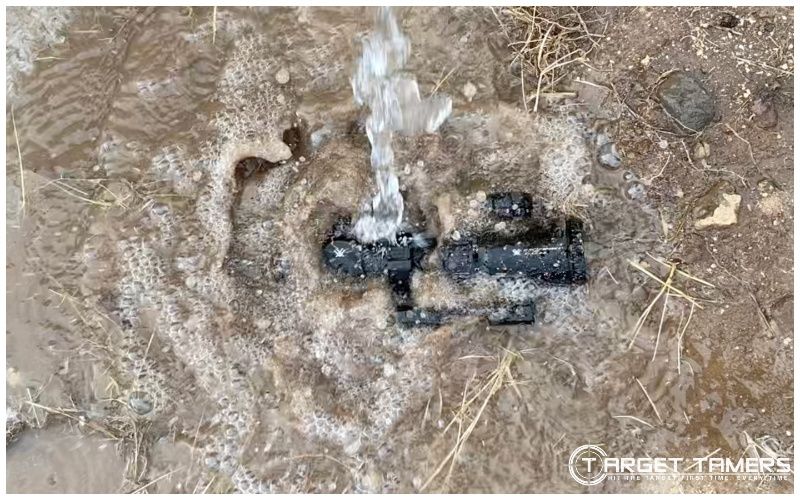
A warranty will go a long way in product confidence and avoiding buyer’s regret. Many manufacturers offer unconditional warranties, and this is the type of coverage you want. Though most warranties cover manufacturer defects, an illumination system typically has warranty limitations.
| Product | Warranty | Warranty Features |
|---|---|---|
| Steiner P4Xi | Heritage Warranty | Lifetime warranty that is automatically transferable, 3-year coverage on electronic components to the original purchaser |
| Trijicon Accupoint | Lifetime Warranty | Lifetime to the original owner, tritium covered for 15 years |
| Leupold Mark 3HD | Lifetime Guarantee | Lifetime, unconditional, electronics covered for 2 years from date of purchase, proof of purchase may be required |
| Bushnell AR Optics FFP Illum. | Lifetime Limited Warranty | Lifetime to the original owner, conditions may apply |
| Leupold VX-Freedom | Lifetime Guarantee | Lifetime, unconditional, electronics covered for 2 years from date of purchase, proof of purchase may be required |
| Vortex Crossfire II | VIP Warranty | Unconditional, lifetime, fully transferable |
| Tacticon Apex Falcon V2 | 1-year Warranty | Return policy within 60 days of purchase, 1-year warranty, conditions may apply |
| Monstrum | Lifetime Warranty | Lifetime warranty, conditions apply |
FAQ's
LPVO scopes offer low magnification that makes it especially quick to use in close quarters. This is usually inside 100 yards but can extend out to about 250 yards without holding over. This makes it an ideal scope for tactical operations, self-defense, some types of hunting, and some competition.
In general, a 1-4x LPVO scope is excellent on a do-it-all firearm, namely an AR-15 and other carbines, for close-quarter engagements from professional (military and law enforcement) special operations to home and self-defense. With a 1-4x, it would be excellent for 0-150 yards.
You can stretch the distance further especially with a BDC reticle, but the 1-4x LPVO offers rapid target engagement especially on moving targets with low magnification within 25-75 yards.
On average, the primary difference will be in the configuration, i.e., 1-4x, 1-6, 1-8x, and 1-10x. Though these are the common LPV configurations, there are a few 1-5x, 1-7x, and 1-12x scopes and some that start with 1.5x magnification.
Check out our best 1-6x scopes and top 1-8x scopes to see what's ranking as everyone's favorite LPVOs!
Secondly, LPVO scopes share similar features such as 30mm tubes, 24mm objectives, exposed turrets, throw levers, and of course, low magnification. However, these specs can change like an LPV with a 34mm tube or an LPVO with capped, low-profile turrets.
In total, LPVO scopes are highly recognized as scopes intended for the flat-top rifle such as an AR-15. However, they can also be mounted to a hunting rifle and perform as expected. There are quite a few hunting conditions where an LPV would be an appropriate optic for the job.
Overall, a 100-yard zero is a common sight-in distance for an LPVO scope. However, if this is a scope that will primary be used inside 100 yards, you could consider the 36/300-yard zero and the 50/200-yard zero.
The 1-4x LPVO: For Speed and Fast-Moving Engagements
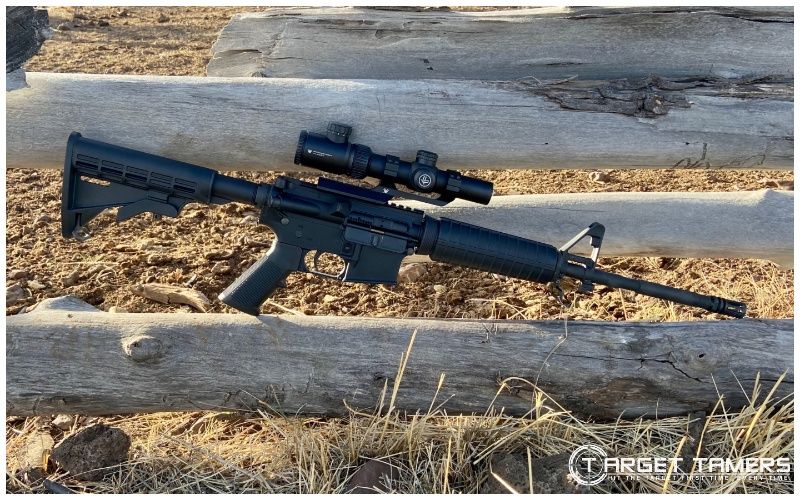
In my opinion, if you have astigmatism and can’t find a red dot suitable for your eyes or if you’re really only shooting inside 200 yards, I’d say the 1-4x LPVO is for you. To get more range, I’d recommend considering 1-6x LPVO scopes.
With such low magnification, this is a scope that’s made for speed and fast-moving targets or engagements. This really isn’t the kind of scope for dialing in for long-range or even hitting out mid-range distances though some 1-4x scopes will cover that. But to address immediate threats where low power is King, the 1-4x is built for it.
Further Reading



